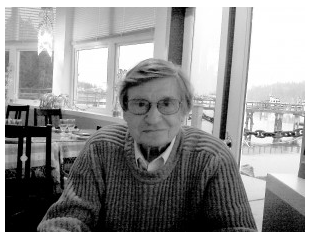January 29, 2013

At the age of 90, British director Robert Day has seen it all. Starting as a London clapper boy in the 1940s, he became a highly sought after camera operator in the 50s, before settling into a long and varied directing career starting with The Green Man (1956). Working on everything from Boris Karloff monster movies to Peter Sellers comedies, he was a jack of all trades before love brought him to Hollywood in the late ’60s, where he became a prolific television director through the 1980s. I was able to have a telephone chat with the gregarious craftsman, where we touched on the different phases of his wildly productive life.
What was your childhood like in London? Did you get into movies at a young age?
RD: My Dad was a scientist and my mom took care of the kids. The first movie I remember watching was one with Charlie Chaplin, a talkie, it gave me a throbbing headache
From your time as a camera operator, you worked on the great film noir They Made Me A Fugitive (1947). It paints post-war London as a foggy and nightmarish place. How did you and director of photography Otto Heller create this atmosphere?
RD: It was all in the lighting. I did over 20 movies with Otto. He came from Czechoslovakia and I was the first one to work with him in Britain.
You also worked with directors Carol Reed and Edward Dmytryk as a camera operator. What did you learn from these two that aided your own career as a director?
RD I learned a lot of technical things from both Carol Reed and Edward Dmytryk. They liked me so they helped me a lot.
You worked with Dmytryk in the UK soon after he was blacklisted in Hollywood. What was your opinion of the blacklist, and were you politically involved in this period?
RD The blacklist was awful. I was working so much I didn’t have time for politics.
How did you land your first directing job on The Green Man?
RD: Well, I was working as a cameraman with Sidney Gilliat, the director. I talked with him about directing a movie myself, and he said maybe one of these days you will. And sure enough, months later, I had this offer from him.
Were you nervous?
RD: I was overwhelmed – flabbergasted. Alistair Sim, the star of the movie, offered suggestions. He was a very erudite man and helped me a lot.
Later you worked on two horror movies with Boris Karloff (The Haunted Strangler and Corridors of Blood, both 1958), produced by Richard and Alex Gordon. How was it working with Karloff?
RD: A wonderful man, very low key. He was always willing to take advice about anything. He always did what I wanted! We remained friends forever. When Boris was working he was really into the film. He was always prepared.
Now you had a different experience with Peter Sellers on Two Way Stretch (1960)
RD: I didn’t like him very much as a man. I had various arguments with him, but I always got my way, through various tricks. I would bring him around to my way of thinking. Sometimes very difficult. But I always got my way and wouldn’t relax until I did. Peter Sellers was extremely neurotic and at the core very insecure. He was really best at impersonating characters, rather than being a good actor. Two Way Stretch was really early in his working career. Halfway through the movie he was given a “star” complex. The film people felt he was up and coming.
At what point he refused to come to the set?
RD: Yes, because of one of the arguments we had. He kept me waiting four days.
What did you have to do to convince him?
RD: Wait. Just wait. I was chewing my nails. But eventually he came around. I wouldn’t give in. He had this cadre of people around him that would say one thing, and I was advising him to go in another direction. And finally he came around.
Did you ever work with him again?
RD: I would never work with him again. But he didn’t seem to hold anything against me. I couldn’t go through that drama again.
What attracted you to the TARZAN series, which you made four of?
RD: Opportunity, I thought the films would broaden my experiences.
What made you leave the UK for the U.S.?
RD: I was working on a Tarzan film and Terry Thomas, an old friend from The Green Man, brought the American actress Dorothy Provine to the set. She had just finished an Italian film called Kiss the Girls and Make them Die (1966). She came to my set, and we enjoyed each other’s company so much, we then decided to get married. It was a wonderful relationship I had with her. We were married for 43 years.
What were the differences between working in U.S. and the U.K.?
RD: Things moved faster in America. Much faster. I preferred it. I really enjoyed working that way much more. But I think films at the time had a little more substance in the UK.
One of your telefilms is The Initiation of Sarah (1978), seemingly influenced by Carrie (1976). Were you aware conscious of Carrie’s influence, and what do you recall of the production?
RD: Regarding Carrie, I am not sure. Working with Shelley Winters was tough and not very rewarding, although it was late in her career.
One of your last movies was Higher Ground (1988) with John Denver. How did you decide which projects to take on at this stage in your career?
RD: I thoroughly liked working with John Denver. For me making films was always about the people, the cultures, and the environment.

